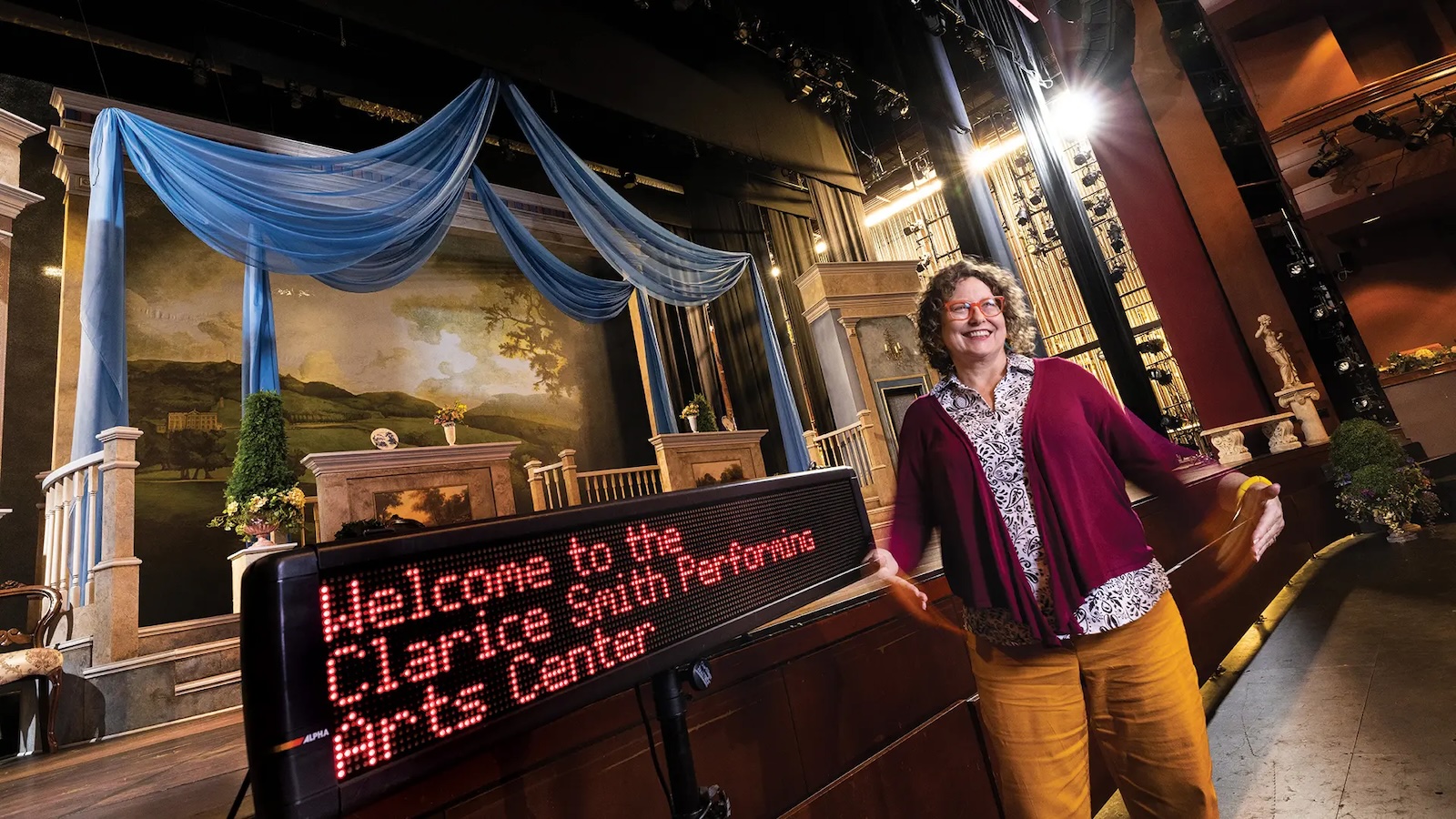Signs of Accessibility in Performing Arts
November 21, 2024

New TDPS director is school’s first deaf leader.
By Sala Levin '10 | Maryland Today
Until Jill Bradbury was in her early 30s, attending plays and musicals had left the literary scholar cold for one key reason: She couldn’t understand them, having lost her hearing after a childhood case of meningitis. Then a production of Richard Kalinoski’s play “Beast on the Moon” in American Sign Language (ASL) at the Rochester Institute for Technology’s National Technical Institute for the Deaf (NTID) changed her life trajectory.
“It was such a revelation,” said Bradbury, then an assistant professor in NTID’s Department of Cultural and Creative Studies. “I could enjoy theater for the first time.”
Since then, Bradbury has largely devoted herself to innovating within the long history of Deaf theater, which has used ASL and Protactile, a form of communication in which sign language is articulated into a person’s body, often their hands. In July she was named the first Deaf director of UMD’s School of Theatre, Dance, and Performance Studies (TDPS).
Bradbury talked with Maryland Today about being the only person in an audience using a closed-captioning device and how to make TDPS performances more accessible for a wider range of theatergoers.
What are some early examples of Deaf theater?
It goes all the way back to the formation of schools for the Deaf in the 19th century. Those schools did a lot of religious education—signing psalms and hymns, and enacting stories from the Bible. In the 1850s and ’60s, you start to see Deaf people putting on plays by hearing authors. There are Shakespeare plays by the Deaf dating back to the 1860s in London.
What don’t hearing people know about Deaf theater?
They don’t know what’s possible in that tradition and what’s not, and so they tend to come at it by bringing what they know to the experience: Movement-based physical theater like ballet or dance are the frames of references they have.
Read the full story in Maryland Today.

